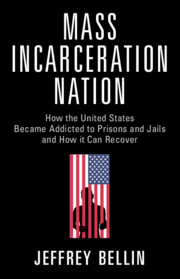 Mass Incarceration Nation
Mass Incarceration Nation Book contents
- Mass Incarceration Nation
- Mass Incarceration Nation
- Copyright page
- Contents
- Figures
- Tables
- Acknowledgments
- Introduction
- Part I What Is Mass Incarceration?
- Part II The Building Blocks of Mass Incarceration
- Part III The Mechanics of Mass Incarceration
- Part IV The Road to Recovery
- 18 What Success Looks Like
- 19 (Mostly) Abolish the Feds
- 20 Less Crime, Part 1
- 21 Less Crime, Part 2
- 22 Reducing Admissions and Shortening Stays
- Conclusion
- Notes
- Index
22 - Reducing Admissions and Shortening Stays
from Part IV - The Road to Recovery
Published online by Cambridge University Press: 03 November 2022
- Mass Incarceration Nation
- Mass Incarceration Nation
- Copyright page
- Contents
- Figures
- Tables
- Acknowledgments
- Introduction
- Part I What Is Mass Incarceration?
- Part II The Building Blocks of Mass Incarceration
- Part III The Mechanics of Mass Incarceration
- Part IV The Road to Recovery
- 18 What Success Looks Like
- 19 (Mostly) Abolish the Feds
- 20 Less Crime, Part 1
- 21 Less Crime, Part 2
- 22 Reducing Admissions and Shortening Stays
- Conclusion
- Notes
- Index
Summary
In 1970, there were approximately 200,000 people in state and federal prisons and an incarceration rate of about 96 persons per 100,000 population.1 A variety of steps will be required to get back to these numbers. The previous chapters discuss ways to shrink the pool of people caught up in the criminal justice system by reducing the scope of American criminal law and decreasing offending. This chapter discusses ways to limit the number of people incarcerated from the remaining pool of law breakers. The two basic steps are (1) decreasing the number of admissions to prison/jail and (2) reducing the time served for those who are incarcerated.
- Type
- Chapter
- Information
- Mass Incarceration NationHow the United States Became Addicted to Prisons and Jails and How It Can Recover, pp. 184 - 193Publisher: Cambridge University PressPrint publication year: 2022
